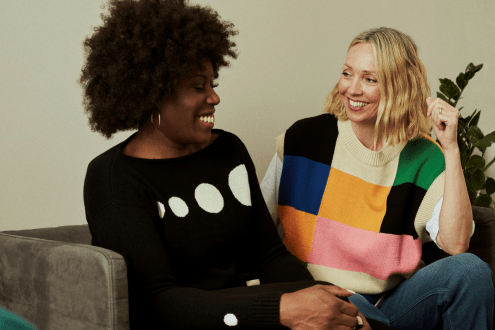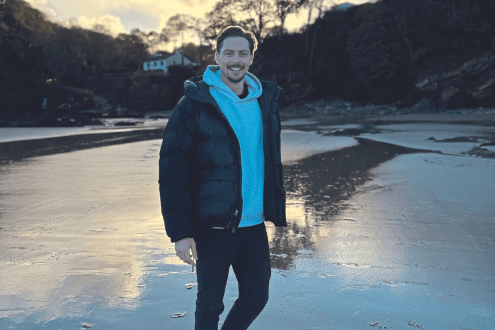How to develop a vision for your future best life
Living through a crisis, holding onto our dreams fosters hope for a brighter future. Taking steps, however small that move us towards our dreams is essential to maintaining positivity - even in the darkest of times.

This article explores an approach called ‘solutions-focused thinking’ to develop a vision for your future “best life”. The aim is to explore positive experiences, strengths, values, and resources to help you set goals and build on what motivates, matters most to you and works for you. Once the vision is clarified, then you can take specific and concrete steps to move towards your “best life”.
How to do it
This exercise is based on the work of Dr Laura King. Participants in Dr King’s most famous study were given the following very simple instructions:
Take a moment to imagine your life in the future. What is the best possible life you can imagine? Consider all of the relevant areas of your life, such as your career, academic work, relationships, hobbies, and/or health. What would happen in these areas of your life in your best possible future? For the next 15 minutes, write continuously about what you imagine this best possible future to be.
Use the instructions below to help guide you through this process.
It may be easy for this exercise to lead you to examine how your current life may not match this best possible future. You may be tempted to think about ways in which accomplishing goals has been difficult for you in the past, or about financial/time/social barriers to being able to make these accomplishments happen. For the purpose of this exercise, however, please imagine a brighter future in which you are your best self and your circumstances change just enough to make this best possible life happen.
This exercise is most useful when it is very specific. Think about a new job or different career, imagine exactly what you would do, who you would work with, and where it would be. The more specific you are, the more engaged you will be in the exercise and the more you’ll get out of it.
Find a time when you will not be disturbed, and you feel rested and relaxed. Let the words flow in whatever way is comfortable for you. If you prefer, you might speak into your voice recorder on your smartphone and playback later, or simply write out your thoughts. Remember that this is just for you. No one else needs to see it. Be as creative and imaginative as you want, and don’t worry about grammar or spelling.
Do the same exercise again to the very same prompt on each of the following three days. Then take some time to read all three. What do you notice? What are the recurring themes of your “best life”? Then consider the following questions and write down your answers:
What does your “best life” vision say about your priorities and values?
What does it say about what you enjoy most deeply?
How do you experience elements of your “best life” in your life now?
How could you get more of that in your life now?
How could you get more of it in your life in the future?
What strengths and resources could you use to make that happen?
Who might help you with feedback, acting as a mentor or other support?
Is there one specific thing you’d like to commit to doing this week to move in that direction?
Why you should try it
Sometimes our goals in life can be elusive. Research suggests that building optimism about the future can motivate people to work toward that desired future and thus make it more likely to become a reality. As with most of life, both what we think and what we do make a big difference. This exercise asks you to imagine your life going as well as it possibly could, then write about this best possible future. By doing so, research suggests that you’ll not only increase your happiness in the present but pave the way for sustained happiness down the line.
Why it works
By thinking about your best possible future self, you can learn about yourself and what you want in life. This way of thinking can help you restructure your priorities in life in order to reach your goals. Additionally, it can help you increase your sense of control over your life by highlighting what you need to do to achieve your dreams. It also provides the motivation to take concrete steps toward making the vision a reality.
Sources
Laura A. King, Ph.D., University of Missouri
Jeffrey Huffman, M.D., Harvard Medical School, Massachusetts General Hospital
Sheldon, K. M., & Lyubomirsky, S. (2006). How to increase and sustain positive emotion: The effects of expressing gratitude and visualizing best possible selves. Journal of Positive Psychology, 1(2), 73-82.
Beverly Landais PCC
Certified Personal & Team Coach: enabling people to be at their resourceful best
We live in an ever-changing dynamic world. At best, this can be exhilarating and provide excellent opportunities for personal growth. At worst, it can be exhausting and stressful as you try to do it all, which can lead to the feeling that you are doing nothing well. Maybe you are in such a situation? Perhaps you have reached a point where you long to create the life that you want rather than the one that is happening? If so, I may be the right coach to support you. My purpose is simple. I work with people to help them be at their resourceful best. I bring all of my expertise to the service of my clients. My skill set includes 30 years of experience in business, including board level. As a Professional Certified Coach and Positive Psychology Practitioner, I can help you to think your options through, make better choices and do the things that promote wellbeing, bring personal as well as professional satisfaction and make you happy. I am particularly skilled in supporting those who are at a crossroads in their life. My coaching approach can help you gain a clear understanding of your values, motivators, drivers, strengths and consider the impact of blind spots – and what you can do to mitigate these. I work via video calls, by phone and email. Should you wish to arrange a 30-minute complimentary discovery session, please contact me via connect@beverlylandais.co.uk


